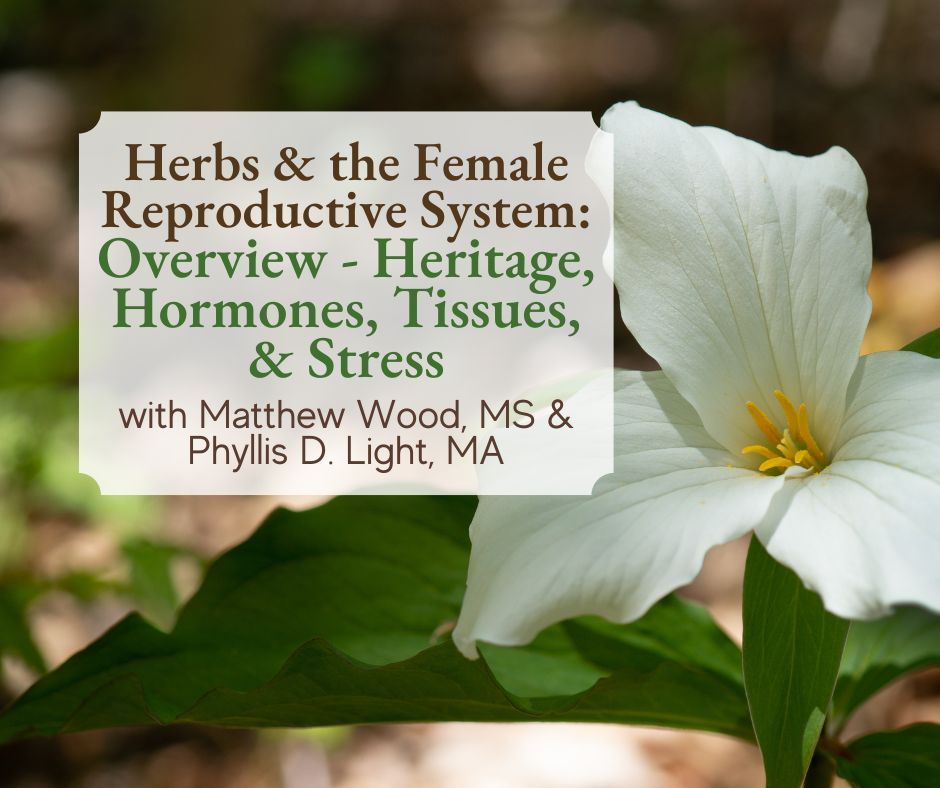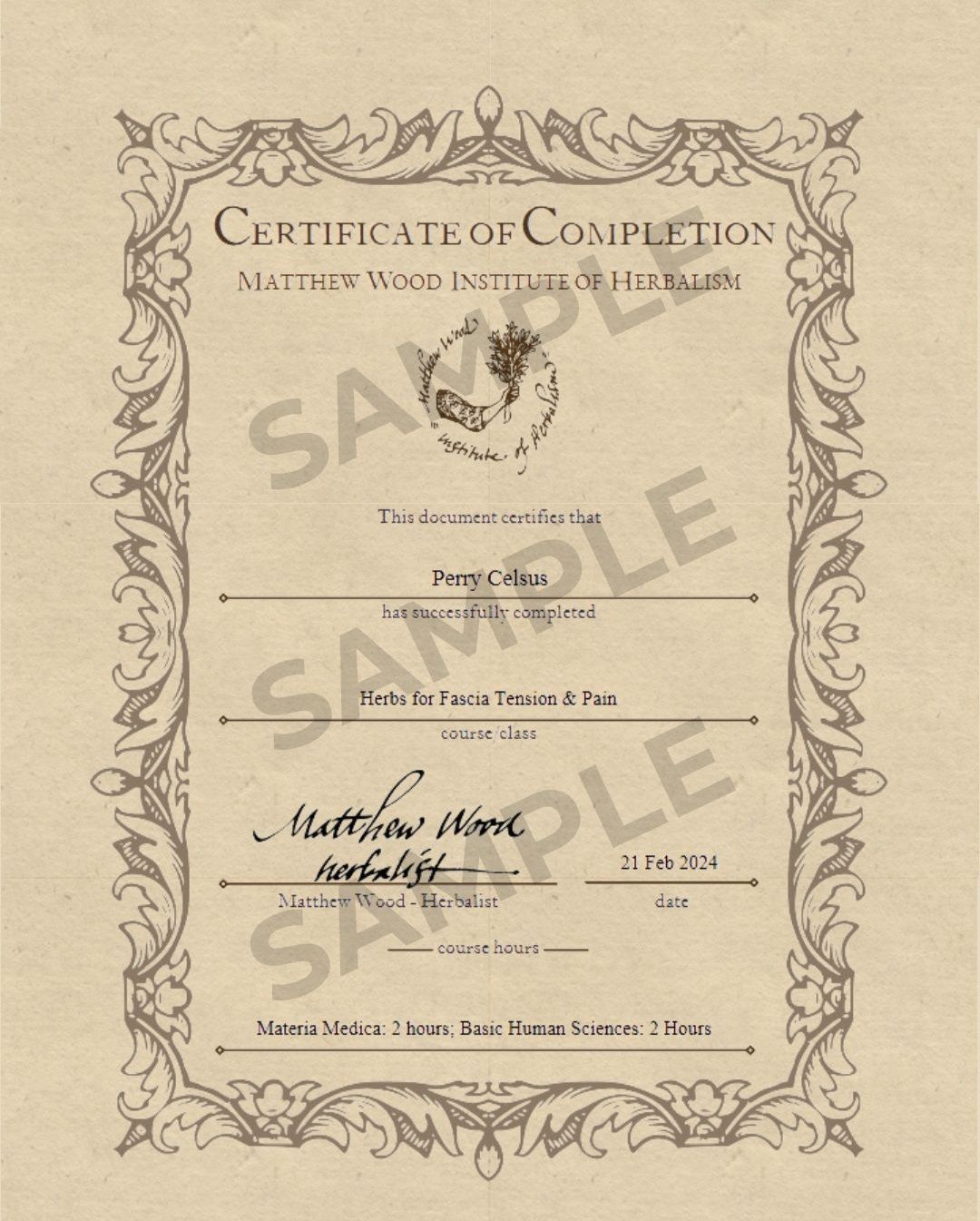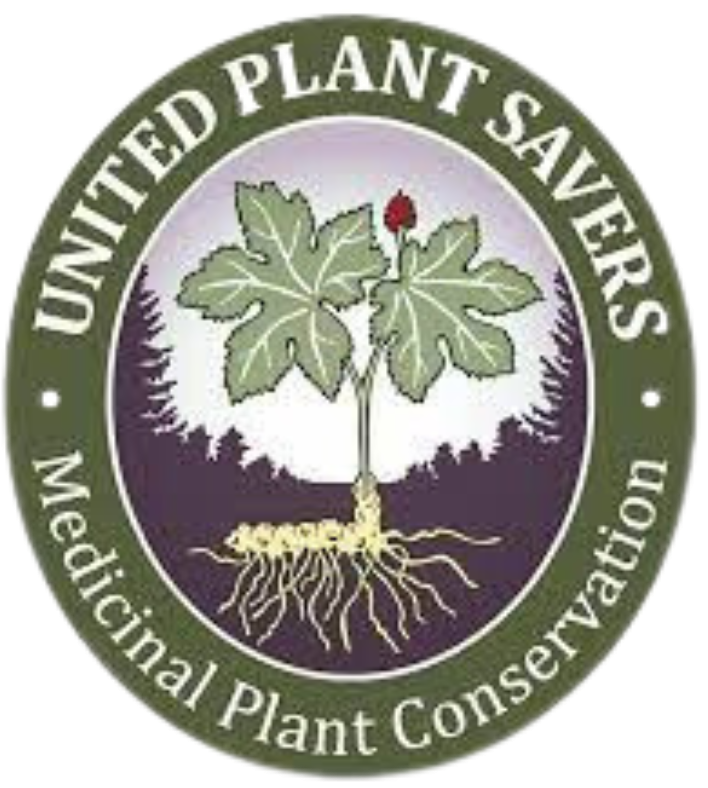
Female Reproductive System: Overview - Heritage, Hormones, Tissues, and Stress
Encompassing - Gift - Diverse
Shining light on the complexity of the Female Reproductive system.
The female reproductive tract is complex to begin with, more so after the beginning of menses, during the monthly cycle, during and after pregnancy, for which fertility herbs may be needed, and during menopause.
In this series of classes, we address all of these epochs of life, the difficulties encountered therein, and the numerous remedies we have successfully used over the years.
In order to remedy female conditions effectively, multiple approaches are necessary: a knowledge of hormones AND knowledge of tissue states and structures: how to remedy tendons, ligaments, mucosa, muscles, pelvic floor, drying out of the skin, mucosa, and vagina, and even the kidneys and bladder.
The liver is also important because it breaks down old hormones. A woman must take her own health into her own hands.
Includes
Support Materials
28 page document by Matthew Wood and Phyllis D. Light
Support Materials
6 page document by Phyllis D. Light
Video
2 hours of teaching
Certificate
Certificate included
(see more below)
This is for you if you...
Upon completion, you will...
Teachers
Matthew Wood, MS
Matthew Wood has been a practicing herbalist for over forty years. He is an internationally known teacher and author with more than ten books to his credit. Matthew has an MSc in herbal medicine from the Scottish School of Herbal Medicine (accredited, U. of Wales). He lives in the Midwest.
Phyllis D. Light, MA
As a 4th generation herbalist, Phyllis started with lessons from her grandmother who taught from her Creek/Cherokee heritage. Phyllis has studied and worked with herbs, foods, and other healing techniques for 30+ years. She is the author of Southern Folk Medicine and co-author of Traditional Western Herbalism Pulse Evaluation.
Certificate Included

-
How to Get a Certificate
- Complete course materials
- Pass the test with a grade of 70% or better
- Save or print your certificate!
Available with subscription and individual course purchases.
-
Accreditation hours
This course is a total of 4 accredited hours- 0.5 hours Clinical Experience
- 1.75 hours Materia Medica
- 1.75 hours Basic Human Sciences
*Please check with your accrediting agency whether they will accept accredited hours or certificates from the Matthew Wood Institute of Herbalism
Write your awesome label here.
Female Reproductive System: Overview - Heritage, Hormones, Tissues, and Stress
Will you be the next to carry the torch with this life-changing knowledge?
Looking For A DEEPER JOURNEY INTO HERBALISM?

